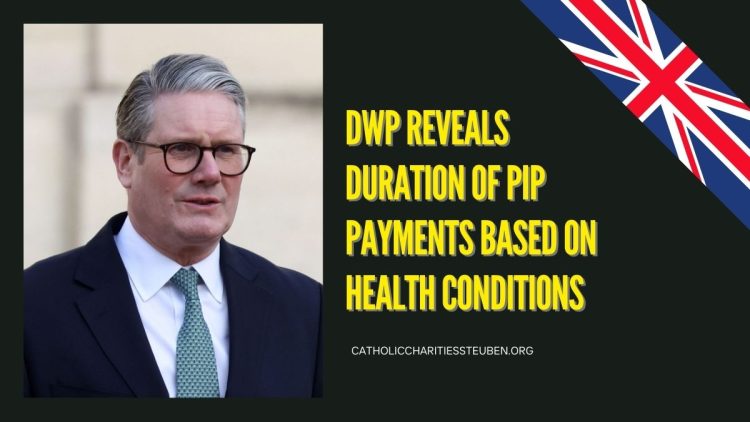The Department for Work and Pensions (DWP) recently announced major reforms to the Personal Independence Payment (PIP) eligibility criteria, which will come into effect in November 2026.
These changes will affect both new claimants and those already receiving PIP, but current claimants will only experience the impact during their next review, scheduled after the implementation date.
This article will cover everything you need to know about PIP and Adult Disability Payment (ADP), including eligibility, payment rates, and key changes that are expected to impact millions of recipients.
Key Changes to PIP Eligibility
PIP Reform Implementation in 2026
As of November 2026, PIP will undergo a reform that impacts both new and existing claimants. However, existing claimants won’t be affected by the change until their next scheduled review after the implementation date.
PIP Claimant Statistics
As of January 2025, over 1.6 million individuals in the UK are currently receiving PIP for disabilities, long-term illnesses, or mental health conditions. This includes claimants in England, Wales, Scotland, and those living abroad.
Recent figures show:
- Over 65% of claimants with visual conditions have been granted PIP for five years or more.
- 50.8% of individuals with musculoskeletal conditions, like arthritis, have received long-term awards.
- Nearly 50% of claimants with neurological conditions, such as epilepsy and multiple sclerosis, are also receiving long-term awards.
Length of Awards and Reviews
Award Duration and Reviews
- PIP awards can last anywhere from nine months to 10 years, with the DWP typically recording awards lasting five years or longer.
- The PIP Handbook notes that awards are determined based on how a claimant’s health condition or disability affects their daily life and independence.
Regular Reviews and Fixed-Term Awards
Most recipients will undergo regular reviews, regardless of the length of their award, to ensure they are receiving the appropriate level of support.
For some individuals, fixed-term awards of up to two years are issued, particularly if improvements in health are expected.
‘Light Touch’ Review System
Certain individuals, whose health conditions are unlikely to change, may receive a ‘light touch’ review, meaning they would not typically be required to undergo a face-to-face assessment.
PIP and ADP Payment Rates for 2025/26
Overview of PIP and ADP Payments
The PIP and ADP payment rates for the 2025/26 financial year will vary depending on the claimant’s health condition.
Payments are made every four weeks unless the claimant is terminally ill, in which case payments are made weekly.
2025/26 Payment Breakdown
| Component | Standard Rate | Enhanced Rate |
|---|---|---|
| Daily Living | £73.90 | £110.40 |
| Mobility | £29.20 | £77.05 |
- Daily Living Component: This component covers the help you need with everyday tasks.
- Mobility Component: This helps cover the additional costs of getting around.
For those receiving the highest awards for both components, the maximum monthly PIP payment can reach £749.80.
PIP and ADP for Specific Health Conditions
Certain conditions have been linked to higher rates of long-term PIP awards. As of January 2025, the following conditions had the highest percentages of five-year or longer awards:
- Visual disease: 58,539 claimants
- Musculoskeletal disease (general): 697,476 claimants
- Neurological disease: 472,121 claimants
Eligibility for PIP and ADP
Who Can Qualify?
To be eligible for PIP or ADP, applicants must:
- Experience difficulties with daily living or mobility for at least three months.
- Expect these difficulties to persist for at least nine months.
- Be a resident in the UK for at least two of the last three years.
Special rules apply if a person is terminally ill.
How PIP and ADP Are Paid
PIP and ADP are typically paid every four weeks, though terminally ill claimants will receive payments on a weekly basis. Payments are made directly into a bank or building society account.
Application Process
To apply for PIP or ADP, follow these steps:
- Contact the DWP to initiate your claim.
- Have your contact details, National Insurance number, bank account information, and doctor’s contact details ready.
- Fill out the necessary forms, either online or via mail.
More information about the application process can be found on GOV.UK.
The Department for Work and Pensions has made significant changes to the Personal Independence Payment (PIP) system, affecting eligibility and award durations. These changes, set to be implemented in November 2026, will impact both new and existing claimants.
Claimants must be aware of the review process, payment rates, and eligibility criteria to ensure they receive the appropriate level of financial support. For those considering applying, it is crucial to understand the application process and the different components that make up the PIP and ADP payments.
By staying informed, claimants can better navigate the PIP system and ensure they receive the help they need.
FAQs
How long can I receive PIP or ADP?
The length of your award can range from nine months to ten years, depending on your condition and how it impacts your daily life.
How are PIP and ADP payments determined?
Your payments are based on the severity of your condition. PIP consists of two components: Daily Living and Mobility, each with standard and enhanced rates.
How often are PIP and ADP payments reviewed?
Most claimants will have their awards reviewed regularly. Some may have a ‘light touch’ review, which means no face-to-face assessment unless requested.
